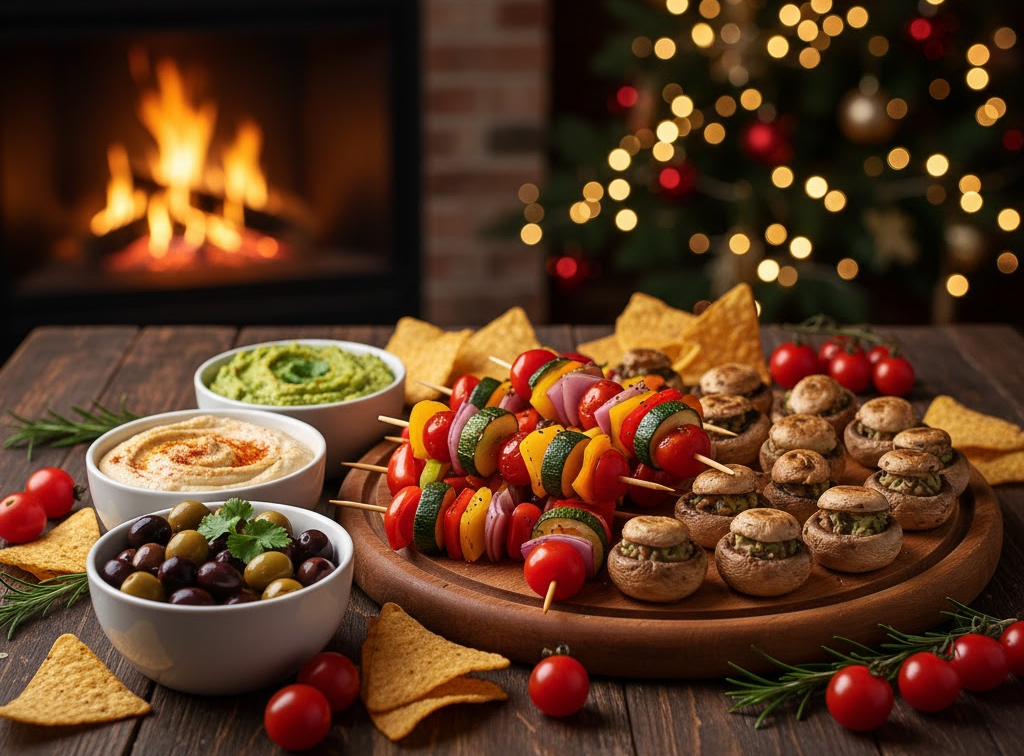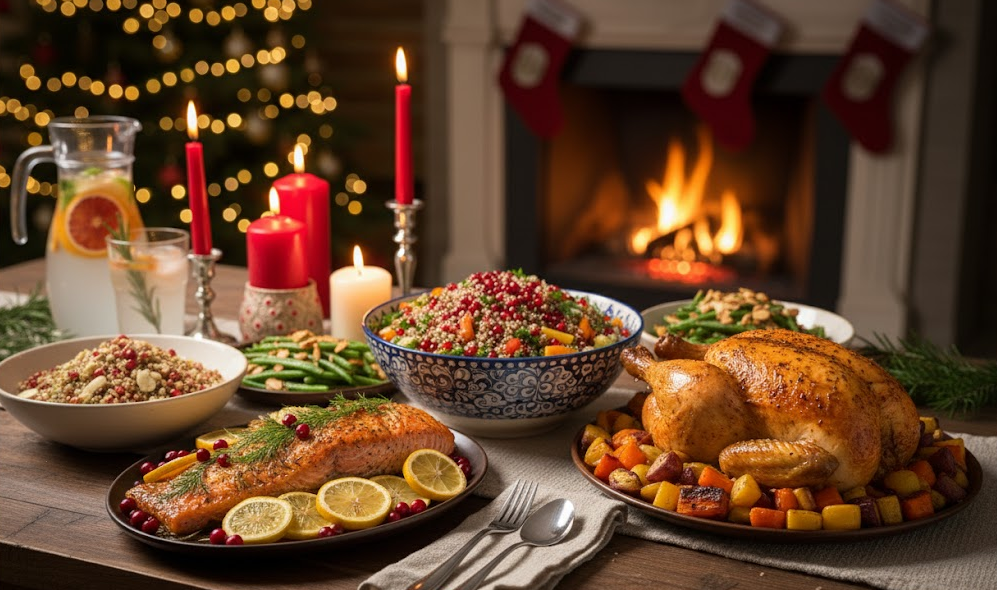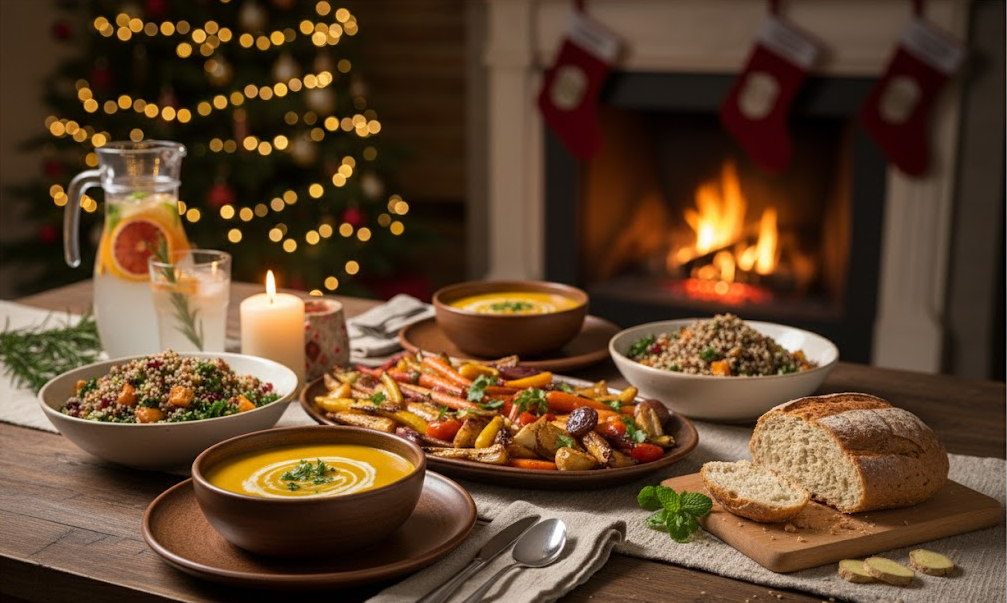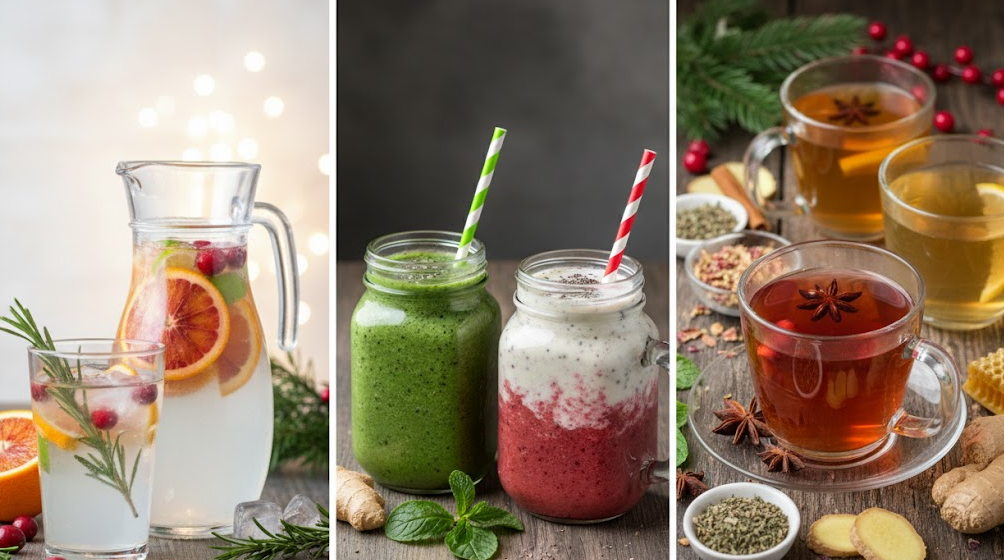How to Eat Healthy During the Holidays: Smart Tips for a Balanced Season
The holiday season is filled with laughter, celebrations, and delicious feasts that bring people together. From family dinners to office parties, it’s the time of year when our plates are just as full as our schedules. But along with the joy comes a challenge — how do you enjoy festive food without overindulging or feeling guilty afterward? The good news is that healthy eating during the holidays isn’t about restriction; it’s about balance, mindfulness, and making smart choices that let you celebrate freely.
Why It’s Hard to Eat Healthy During the Holidays
During the holidays, it’s really hard to eat healthy. When all family members and friends gather together, the focus naturally shifts toward fun and relaxation rather than nutritious meals. Everyone wants to enjoy their time off after a long, tiring period, so preparing healthy food just isn’t a priority.
Each age group has its own preferences. Kids are drawn to chocolates, candies, and sugary treats, they just want to celebrate. Parents, finally free from their busy routines, often let their children eat whatever they want just to keep the peace. Teenagers and Gen Z prefer fast food like burgers and pizza. They’d rather order food than spend time cooking something healthy.
No one really wants to stay in the kitchen or think about nutrition when the mood is all about parties, laughter, and dancing. Drinks are another example — people choose sodas or sugary beverages instead of taking the effort to make fresh juices. Altogether, these realistic situations show why it’s so difficult to maintain healthy eating habits during the holidays.
- Smart Strategies for Mindful Eating
Mindful eating is one of the best ways to enjoy every bite during the holidays without overindulging. The holidays are meant to bring comfort and joy, not extra weight, stress, or health issues. A mindful approach allows you to celebrate the season fully while also taking care of your well-being. Let’s look at some simple yet smart strategies you can adopt this holiday season:
- Plan Your Meals Ahead of Time
Holiday meals don’t have to be spontaneous or unhealthy. If you’re hosting a party, plan your menu according to your guests’ age groups and preferences. For example, prepare colorful fruit platters, grilled chicken skewers, vegetable pastas, or baked salmon for adults, and lighter yet tasty options like mini wraps or yogurt parfaits for kids.
But planning isn’t just the host’s job. If you’re invited somewhere, bring a healthy homemade dish to share. Nutrition doesn’t magically appear on your plate — it requires effort from everyone. When both the host and guests plan thoughtfully, everyone can enjoy the celebration without guilt. Learn more about dietary guidance and nutrition services for holiday planning.
- Eat Slowly and Be Present
During busy holiday gatherings, we often multitask — talking, laughing, or checking our phones while eating. Instead, make mealtime special. Pause your activities, sit together, and enjoy meaningful conversations over food. Eating slowly allows your body to recognize when it’s full and helps you appreciate each flavor. It also turns mealtime into a moment of connection and relaxation. This practice aligns with wellness and preventive care tips.
- Listen to Your Hunger Cues
Before reaching for seconds, take a pause and ask yourself: Am I really hungry, or am I just eating because the food looks good? Sometimes, social settings or tempting smells make us eat mindlessly. Being aware of your body’s signals helps you stay balanced and satisfied without overeating. You can also learn more about nutritional needs by age to plan meals better.
- Portion Wisely
Start small. Fill your plate with a little of everything you truly enjoy instead of piling it up all at once. You can always go back for more if you’re still hungry, but most of the time, a moderate portion is enough to feel satisfied. Dietary counseling can help you understand portion control for different meals.
- Avoid Distractions While Eating
It’s easy to lose track of how much you’ve eaten when you’re focused on your phone or chatting non-stop. Try turning mealtime into a screen-free zone. Being mindful of each bite enhances both the flavor and the feeling of fullness — you’ll end up eating less but enjoying more. For more tips on maintaining a healthy lifestyle, check our health blog
Healthy Holiday Meal Ideas: Starters, Main Courses, Dinner, and Beverages
The holidays don’t mean you have to compromise on nutrition. With a little planning, both hosts and guests can bring dishes that are delicious, festive, and healthy. Here are some practical options for different meals and occasions:

1. Starters and Appetizers
Host Options:
- Veggie Platter with Hummus – Provides fiber, vitamins, and healthy fats.
- Mini Caprese Skewers – Cherry tomatoes, mozzarella, and basil drizzled with olive oil; a good source of protein and antioxidants.
- Stuffed Mushrooms – Low-calorie, packed with vitamins and protein if stuffed with quinoa or cottage cheese.
Guest Options:
- Spinach and Feta Phyllo Cups – Easy to carry and serve, offering calcium and iron.
- Fruit Skewers with Yogurt Dip – High in antioxidants and vitamin C; a sweet and refreshing option.

2. Main Course Options
Host Options:
- Grilled Salmon with Herbs – Rich in omega-3 fatty acids and protein.
- Quinoa Salad with Roasted Vegetables – Fiber-rich and full of vitamins, suitable for vegetarian guests.
- Baked Chicken with Lemon and Garlic – Lean protein, flavorful, and easy to prepare in large quantities.
Guest Options (Bring-Along Dishes):
- Whole-Wheat Pasta Salad – Can be served cold, high in complex carbs and fiber.
- Chickpea and Veggie Wraps – Portable, nutritious, and filling.
- Stuffed Bell Peppers – Easy to share, rich in protein and vitamins.

3. Dinner Ideas
Host Options:
- Vegetable Stir-Fry with Tofu or Chicken – Quick, nutrient-packed, and low in calories.
- Herb-Roasted Vegetables – Seasonal vegetables baked with olive oil and herbs.
- Lentil Soup or Stew – High in fiber, protein, and iron; comforting for winter holidays.
Guest Options:
- Grain Bowls – A mix of brown rice, roasted veggies, and beans or chicken for protein.
- Couscous Salad with Nuts and Dried Fruits – Adds texture, healthy fats, and fiber.
- Baked Falafel Balls – Easy to share and rich in protein and fiber.

4. Beverages
Host Options:
- Infused Water with Citrus and Mint – Hydrating, refreshing, and low-calorie.
- Herbal Teas – Good for digestion and calming after a festive meal.
- Fresh Vegetable Juices – Rich in vitamins, antioxidants, and fiber.
Guest Options:
- Smoothies with Yogurt and Berries – Portable and nutrient-dense.
- Sparkling Water with Fresh Fruit – Adds a festive touch without excess sugar.
- Green Tea or Lemon-Ginger Tea – Helps with digestion and boosts immunity.
Tips for Hosts and Guests Together
- Collaboration is key: If the host prepares some dishes, guests can contribute healthy snacks or sides. This ensures variety, balance, and shared responsibility.
- Mix and match: Guests can bring portable items like wraps, salads, or skewers, while the host focuses on warm mains and beverages.
- Visual appeal matters: Colorful dishes attract everyone, especially kids and Gen Z, making healthy choices more exciting.